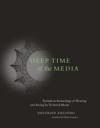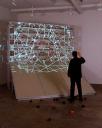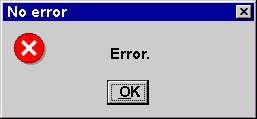 Siegried Zielinski’s Deep Time of the Media (translated by Gloria Custance, Cambridge, MA, MIT Press, c2006) is an unusual book that pokes into the lost histories of media technologies in order to start “toward an archaeology of hearing and seeing by technical means” (as the subtitle goes.) Zielinski starts by talking about the usual linear history of media technologies that recovers what predicts what we believe is important. This is the Vannevar Bush, Ted Nelson type of history. Zielinski looks away from the well known precursurs towards the magical and tries to recover those moments of diversity of technologies. (He writes about Gould’s idea of punctuated equilibrium as a model for media technologies – ie. that we have bursts of diversity and then periods of conformity.)
Siegried Zielinski’s Deep Time of the Media (translated by Gloria Custance, Cambridge, MA, MIT Press, c2006) is an unusual book that pokes into the lost histories of media technologies in order to start “toward an archaeology of hearing and seeing by technical means” (as the subtitle goes.) Zielinski starts by talking about the usual linear history of media technologies that recovers what predicts what we believe is important. This is the Vannevar Bush, Ted Nelson type of history. Zielinski looks away from the well known precursurs towards the magical and tries to recover those moments of diversity of technologies. (He writes about Gould’s idea of punctuated equilibrium as a model for media technologies – ie. that we have bursts of diversity and then periods of conformity.)
I’m interested in his idea of the magical, because I think it is important to the culture of computing. The magical for Zielinski is not a primitive precursor of science or efficiency. The magical is an attitude towards possibility that finds spectacle in technology. Zielinksi has a series of conclusions that sort of sketch out how to preserve the magical:
Developed media worlds need artistic, scientific, technical, and magical challenges. (p. 255)
Cultivating dramaturgies of difference is an effective remedy against the increasing ergonomization of the technical media wolrds that is taking place under the banner of ostensible linear progress. (p. 259)
Establishing effective connections with the peripheries, without attempting to integrate these into the centers, can help to maintain the worlds of the media in a state that is open and transformable. (p. 261)
The most important precondition for guaranteeing the continued existence of relatively power-free spaces in media worlds is to refrain from all claims to occupying the center. (p. 269)
The problem with imagining media worlds that intervene, of analyzing and developing them creatively, is not so much finding an appropriate framework but rather allowing them to develop with and within time. (p. 270)
Kairos poetry in media worlds is potentially an efficacious tool against expropriation of the moment. (p. 272)
Artistic praxis in media worlds is a matter of extravagant expenditure. Ist priviledged location are not palaces but open laboratories. (p. 276)






 Carnegie Mellon is going global with their
Carnegie Mellon is going global with their